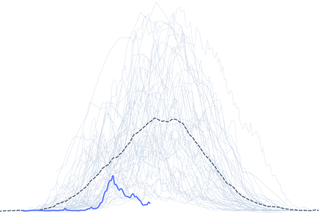Interactions between the ocean and atmosphere shape weather patterns and temperatures around the world. Yet the winter upper troposphere/lower stratosphere temperature/vertical interactions are not fully understood. A new study corrects climate-model biases to unravel atmospheric impacts.
A new study will investigate the connections between North Atlantic sea surface temperature variability and high-impact climate events in the Eastern and Central United States during summer.
The mix of landfalling tropical cyclones and ensuing blackouts exacerbates vulnerability to extreme heat. Climate change is projected to worsen both hazards.
In response to the escalating risks and challenges posed by the evolving climate system, a new research project aims to enhance multi-decadal projections of the El Niño-Southern Oscillation (ENSO) and its profound impacts on weather, climate, and coastal hazards.
By addressing the vulnerability of structures to extreme snow loads, a new study aims to revolutionize design standards outlined by the American Society of Civil Engineers, an integral part of building codes in the United States.
Recent evidence suggests that detritus from fishes and gelatinous zooplankton may have a disproportionate impact on the ocean’s biological pump because they sink approximately 10 times faster than bulk detritus.
A new climate-projection project that will spotlight extreme sea level events along the U.S. East Coast, zeroing in on the Atlantic Meridional Overturning Circulation as a key player in influencing mean sea level variations and weather events.
New research evaluates how changing climate may affect fish catch, fish distributions, and food web structure in the upper 600 meters of the ocean.
A newly published dataset provides insights into the oceanographic conditions within the Olympic Coast National Marine Sanctuary (OCNMS) over nearly two decades, shedding light on marine heat waves, seasonal upwelling, hypoxia, and ocean acidification.
